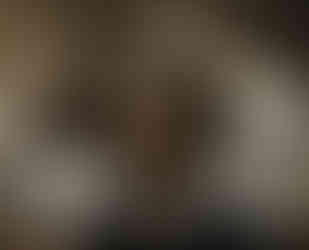Gustave Courbet - The Desperate
- Nathan Lifshitz
- 4 ביוני 2021
- זמן קריאה 2 דקות
עודכן: 4 ביוני 2021
Behind the cheerful mask which you know me by, I hide sorrow, bitterness, and a sadness which clings to the heart like a vampire
Renowned for his crude and moving scenes, Gustave Courbet, leading proponent of Realism; challenged the academic painters by bringing the artwork closer than ever to the beholder. When Courbet painted The Desperate, he was only 25 years old. This enigmatic self-portrait will nontheless establish his reputation.
Beneath a disheveled hair, a livid face with tense muscles emerges. His haunted eyes, half-open mouth and outstretched hands all reflect terror. The emptiness of the background brings out all his excentricity. The white tone stands in contrast with his brown hair, his eyes and his beard, emphasizing his gestures and creating an atmosphere of growing tension.
From the left, emanates a ray of light. Like Caravaggio and Rembrandt before him, Courbet uses light effects to break down the distance between the portrait and the viewer's gaze, thereby creating a closed and intimate space. Courbet who was not the first to break away from conventional genre hierarchies, also uses a horizontal format for this very reason - His uncommon and bold choice increases the impression of being watched by the man in the picture.
On closer observation, the harmonious facial expression and the artist's withered hands give away his age and plight. Was this an artistic choice or a fraud? Around the same time, Courbet made a somewhat similar, unfinished portrait, which he entitled Le Fou de Peur (1844). His hands, expression and posture evoke confusion rather than fear and, like The Desperate, are also defined by their theatrical appeal.
By emphasizing the emotional aspect of the two portraits at the expense of a faithful representation of reality, Courbet arouses the interest of the beholder and incites him to interact with the images.
Nathan
1. Gustave Courbet, The Desperate, 1843-1854, oil on canvas, 55x45 cm, private collection
2. Gustave Courbet, Le fou de peur, 1844, oil on paper, 61x91.4, cm, Oslo National Gallery.
Moran, Claire. “Theatricality, Irony and Artifice in Gustave Courbet's Self-Portraits.” Journal of romance studies 13.2 (2013): 41.




